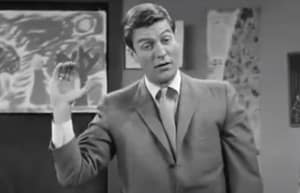
Expectations
Hi, YOU! You’re looking well.
I’m seeing reports of people’s first shows back live. Such an exciting time! How are the physical elements working for you? Have those skills atrophied a bit?
If you think they have, that’s normal. How could it not be, if you’ve been improvising in a tiny video frame for the last year and a half? Or not improvising AT ALL?
Let’s talk about expectations…
Physical Comedy Expectations

A couple of weeks ago I was delighted to stumble across some video of the Dick Van Dyke Show. Most people remember Van Dyke’s great song-and-dance work in Mary Poppins, but forget how spectacular his physical comedy skills were. Here’s an example. And another.
This is the start of a deep and wonderful rabbit hole, from TV superstars like Lucille Ball and Carol Burnett to early-screen performers like Buster Keaton, Laurel & Hardy, Chaplin, Jacques Tati, and on and on. All amazingly physical and inspiring to performers like you and me.
Watch clips of their work and you’ll find acrobatic falls, brilliant object work, and even a few new dance moves (Groucho Marx corkscrew, anyone?). All fantastic stuff for stage comedy.
BUT, it’s important to remember that these moves and performances were planned and rehearsed by highly-trained performers. They look spontaneous and natural precisely because they’re so choreographed. Moves like these — done spontaneously in improv where other performers can step into range at any moment — are unsafe even in the best conditions.
As we return to stages and in-person live performance, it’s natural to want to be more physical. To break out of the fixed perspective of online improv and use a whole stage. To touch other performers. We all want to do grand physical work just to stretch our bodies.
BUT we have to keep in mind to not push it. Stage comedy uses muscles we haven’t exercised, and no doubt our situational awareness has atrophied as well. We have to relearn how to use the space, and how to do it safely.
By all means, we should continue to take inspiration from the greats, and bring their energy to our work. But we should also expect that getting back into “stage-shape” is a process, and not forget the important safety aspects of improv.
To everyone getting back on stage: break a leg! But also don’t, if you know what I mean!
More for the Improv Illusionist
Improv Exercises for Physical Skills
Improv Books — Reviews & Recommendations
I’m reading some interesting comedy and movement books lately. More book reviews coming soon!
Improv Podcasts — Reviews & Recommendations
News and Links
Director, Dramaturge, and Theater-Maker Tatiana Godfrey on Responsibility
Interesting episode from Improv Touchstones podcast. Among other topics, Tatiana summarizes the Viewpoints physicality technique, of which I’ve heard little before and want to learn more now!
“C” is for “CROW”
David Charles (Improv Doctor) explains why the Where is one of the fundamental elements of a scene. I also recommend reading his point 2: Use all your tools as an improviser.
Question(s) of the Month
Have you had a first in-person show yet? How did it go? Or if not, how do you think it will go?
Hit Reply and share. I love to chat with readers, and it gives me ideas for future content to help the whole community.
Thanks for reading. I hope you’re finding these newsletters interesting.
If not, I’d love to hear your feedback. Contact me through the website or just reply to this email. I read and respond to everything.
See you back here on August 26th!
Ex nihilo!

